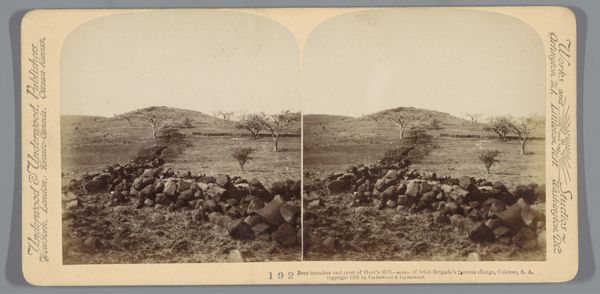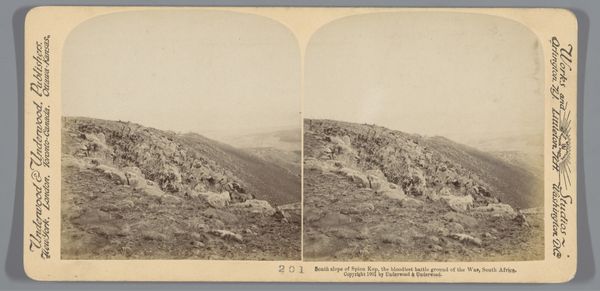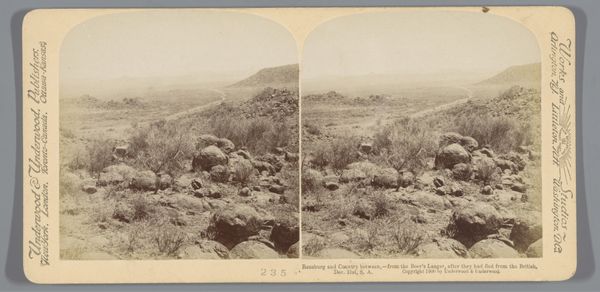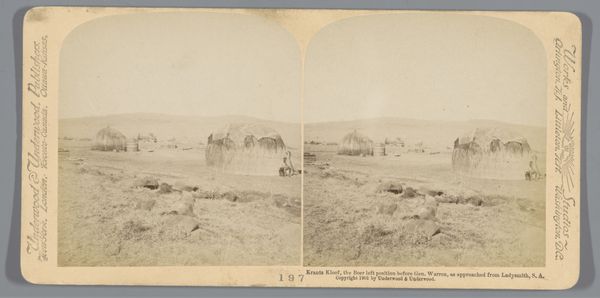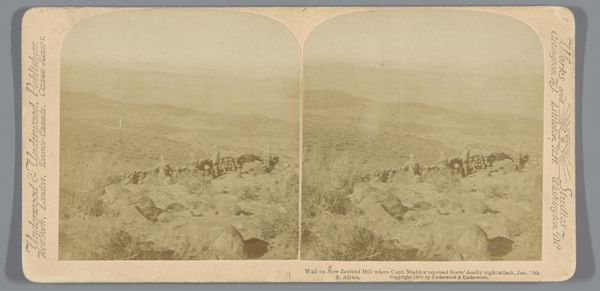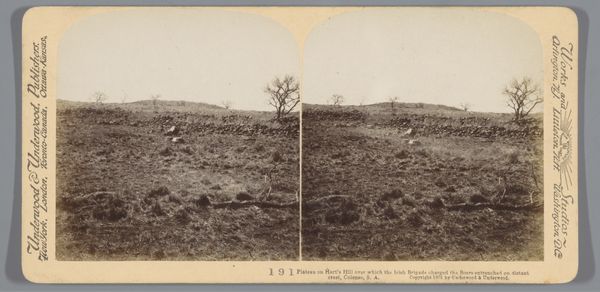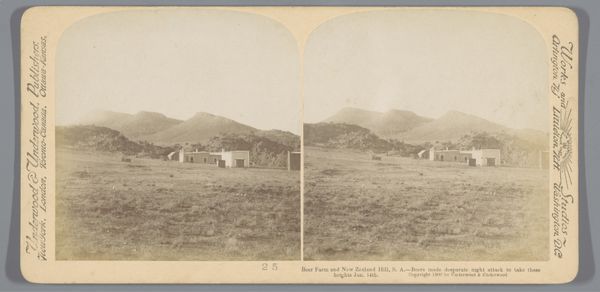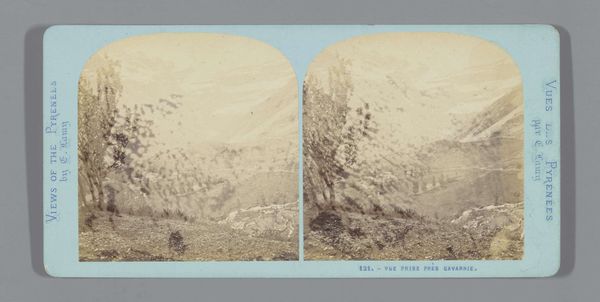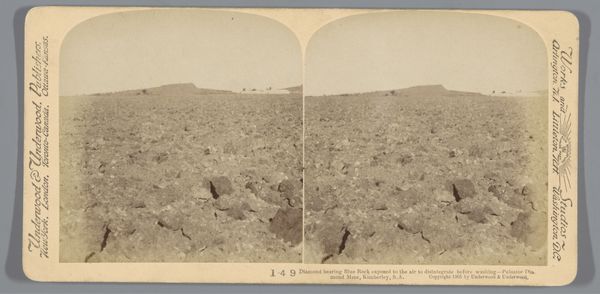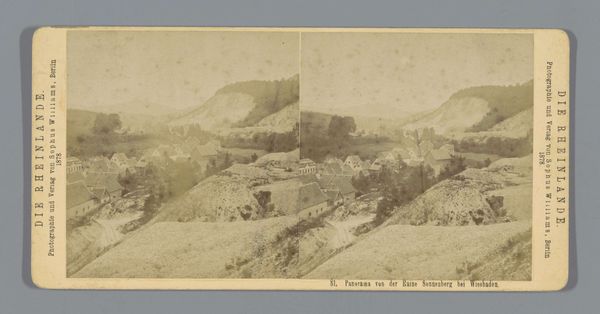
Gezicht op de Hlangwane heuvel waar de slag van Colenso in 1899 plaatsvond 1901
0:00
0:00
stereo, photography, gelatin-silver-print
#
stereo
#
pictorialism
#
landscape
#
photography
#
coloured pencil
#
gelatin-silver-print
Dimensions: height 88 mm, width 178 mm
Copyright: Rijks Museum: Open Domain
Editor: This is a gelatin-silver print stereograph from 1901, "Gezicht op de Hlangwane heuvel waar de slag van Colenso in 1899 plaatsvond" by Underwood & Underwood. The subdued tones give it a somber feeling. What's striking to me is how this seemingly barren landscape became a site of conflict. How do you read this image? Curator: For me, the key to understanding this image lies in understanding its production and distribution as a stereograph. These images were mass-produced for a burgeoning consumer market eager for visual representations of faraway places and events. Consider the labor involved: from photographers on location documenting the aftermath of the battle to the factory workers churning out these cards by the thousands. What story does that process tell about early 20th-century media and consumption? Editor: So you're focusing on the industry behind the image, more than the battle itself? Curator: Precisely! The landscape becomes a raw material, commodified and distributed for profit. We need to consider the economic structures that allow for this type of image-making and distribution, and who benefits. How did this image shape public understanding of the Boer War at the time? Editor: I hadn’t really considered the impact of the photograph being mass-produced on how it was perceived back then. Curator: It speaks to the accessibility of knowledge production and consumption at that time, framing a critical point about the medium. Thinking about the labor and distribution opens new perspectives on what a landscape photograph can mean. Editor: Right. Instead of just seeing the photograph of a place, we see the industry, and the social context that made its creation and distribution possible. Thank you for pointing that out!
Comments
No comments
Be the first to comment and join the conversation on the ultimate creative platform.
